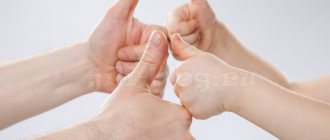Speech therapy classes
— a section with notes on group, frontal, individual speech therapy and logorhythmic classes, as well as integrated classes, master classes on non-traditional teaching methods. We are confident that the materials posted here will be interesting and informative not only for specialists in children's educational institutions, but also for parents who show a sincere interest in the development of their child.
Experienced specialists share their knowledge here, and for beginning speech therapists, the presented notes will help them plan their classes correctly and in a fun way.
Speech characteristics of children 4-5 years old
At this age, children begin to actively expand their vocabulary. So, by the age of 5, on average, a child already has about three thousand words in stock. In addition, five-year students begin to create more complex sentence structures. If previously they consisted of a maximum of 3-4 words, then at this age one sentence can consist of up to 10 words.
Speech therapy classes for children 4-5 years old are very important
Sentences produced by a child aged 4-5 years are not always logically constructed correctly. If a child is telling a long story or retelling a fairy tale, he does not need to be corrected if the main idea or logic is lost. For this age this is within the normal range.
Note! Also, at the age of five, children often not only tell what they saw or heard, but also make up stories themselves, without relying on their life experience. This only once again confirms the correctness of development. Ridiculous stories are one of its components.
Basic characteristics of a child’s speech at 4-5 years old
By the age of five, a child already begins to distinguish sounds and is able to determine the presence or absence of a particular sound in a certain word. Normally, during the period of 4-5 years, a child should already have completed the formation of the pronunciation of certain sounds and letters that were previously difficult to achieve. So, for example, at 4 years old all hissing sounds should already be present in speech. And by the age of 5, a child should master such complex sounds as “l” and “r”.
In practice, everything is not always so perfect and more than half of children have some speech deviations. The following speech underdevelopment occurs:
- phonetic;
- phonetic-phonemic;
- general.
Important! Simply put, children do not recognize, discriminate, or have serious difficulty pronouncing sounds.
Characteristics of the development of a 3-4 year old child
At 3 years old, the child is open to learning his native language, he happily repeats everything after an adult and is actively engaged in word formation. By the age of 4, the passive vocabulary reaches 2,500 words, most of which are verbs and nouns.
The child’s speech also contains:
- simple adjectives (beautiful, small, big);
- possessive pronouns (my);
- generalization words (animals, vegetables).
A preschooler does not yet have much life experience and produces new words in his own way. This gives rise to curious word forms, for example: “Mom is studying, but I am a lazybones.” A three-year-old child is able to maintain a simple dialogue.
The most difficult sounds to pronounce are “R” and “L”, as well as the whistling “Sh”, “S”, “F”. Often, even after reaching four years of age, the child is not able to pronounce them.
Important! If at 3-4 years old a child does not pronounce all sounds clearly, this is not a reason to run to a speech therapist. The sounds “R”, “L”, “Sh”, “S”, “F” are usually introduced at a later age. However, if by the age of 3 the baby does not speak at all, and there were serious illnesses or injuries during pregnancy/birth/in the first year, consultation with specialists is required. Based on the results of the examinations, a psychologist, speech therapist and neurologist will tell you what speech therapy exercises for children 3-4 years old should be performed.
How to conduct classes at home correctly
It is not necessary to immediately run to a speech therapist. To begin with, you can try exercises for speech therapy classes for children 4-5 years old at home. They will help the child master correct speech, learn to hear and pronounce missing sounds.
Children should definitely be taught at home so that they learn how to pronounce sounds correctly.
Typically, speech therapists advise following these simple rules:
- Exercises should be performed every day, always in a child-friendly environment.
- Be sure to conduct lessons in a playful way. It is important to captivate the child so that the tasks do not seem boring and uninteresting to him. You can even arrange a sort of competition to see who can complete the tasks better or faster.
- You cannot criticize or make sarcastic remarks to your child. So the desire to learn something new will disappear completely. Be sure to praise your child when he completes a task. Even if something doesn’t work out, you need to praise him for trying.
- For classes, be sure to use literature that is designed to help parents teach their children independently. There are special reference books on speech therapy, which contain many different exercises for children, as well as recommendations for parents.
- A speech therapy exercise for children 4-5 years old can be turned into pleasure if you correct your speech by studying rhymes and tongue twisters. They will not only allow the child to quickly grasp the necessary sounds, but will also have a positive effect on the development of memory.
- You need to show your child an example of correct speech. Pronounce all words clearly so that the baby understands and clearly hears what is being said to him. You need to talk to him as much as possible, have conversations on any topic, tell different stories.
Templates of speech therapy characteristics for children of different levels for PMPC
High-quality warm-up for lips and tongue
Warming up the lips and tongue plays an important role in the formation of correct speech.
Note! The baby will begin to pronounce words more clearly, without swallowing the ending.
Exercises as a warm-up:
- Stretch your lips in a smile without showing your teeth. You should try to smile as widely as possible.
- Pull your lips forward as if they were an elephant’s proboscis.
- Take turns inflating one or the other cheek, then retract them in the same order.
- Open your mouth and pull your lower jaw as low as possible, while holding your tongue to the roof of your mouth.
- Open your mouth, stick out your tongue. Then put it in your mouth. Do this exercise for 15 seconds.
- Pull out your tongue and blow on a piece of cotton wool on the table until it falls off the table. Blowing with lips is prohibited.
- Use the tip of your tongue to first move along the upper teeth from the inside, then along the lower ones.
- “Scratch” your tongue with your teeth, resting on the lower gum.
Important! To achieve visible results, you need to perform these exercises regularly.
Each of them must be repeated at least 5-6 times.
Classes with a speech therapist. Materials and notes.
Contained in sections:
- The work of a speech therapist. Speech therapy 8270
Includes sections:
- Differentiation and automation of sounds 4048
By groups:
- Senior group
- Preparatory group
- Middle group
- Junior group
Showing publications 1-10 of 9440. All sections | Speech therapy classes
New
Photo
The best
Summary of a speech therapy lesson in the junior group “Toys” Lesson 1 Topic : “Toys (acquaintance)
» Objectives: 1. Clarify and expand the vocabulary on the topic.
2. Form a generalizing concept of “toy”
.
3. Learn to build a phrase from 2 words. 4. Develop attention and memory. 5. Develop the ability to listen to the words of a speech therapist , follow simple instructions, carefully...
Notes of a logorhythmics lesson in a senior speech therapy group “Hello, autumn, hello, forest, full of fairy tales and miracles” Notes of a logorhythmics lesson in a senior speech therapy group . Topic: “Hello, autumn, hello, forest full of fairy tales and miracles!”
Objectives: 1. Development of spatial orientation. 2. Development of coordination of speech with movement. 3. Development and activation of attention. 4. Development...
Exercises for general speech development at home
At home, it is imperative to regularly conduct speech therapy classes for children 4-5 years old, the exercises of which include not only the speech part, but also gymnastics for the speech organs and fingers.
Finger gymnastics
This set of simple exercises stimulates the part in the brain center that is responsible for correct speech. This is why fine motor skills classes are needed not only for the little ones, but also for preschoolers.
Finger exercises stimulate the part of the brain responsible for correct speech
All exercises are done 8-10 repetitions:
- “Opening” and “closing” the fingers on each hand. First one by one, then together. You can gradually increase the speed.
- Place your hands on the table: the left one touches the table with the palm, the right one with the back. Then at the same time you need to turn your hands over.
- First, draw a river: fold your hands, palms up, as if you have water in them. Then depict a steamboat - put your palms together, press your thumbs together and lift them up. Then depict the fish that have arrived: press all your fingers together, palms together and make movements with your hands, as if a fish is swimming.
- Draw a tree with branches - arms vertically, fingers spread out in different directions. Then show the roots of the tree - in the same position, move your hands with your fingers down. Then show leaf fall: quickly, quickly clench and unclench your fingers.
Articulation gymnastics
These exercises are aimed at developing the tongue, the main organ responsible for the correct pronunciation of sounds.
Children's speech as a means of communication: stages of development and functions
Note! Thanks to regular training in articulation gymnastics, the child will soon begin to pronounce even the most difficult sounds.
- Smile as wide as possible, teeth are closed, exactly on top of each other. Stay in this position and count 10 seconds.
- Pull your lips forward and pretend as if an elephant is drawing water with its trunk. Stay for 10 seconds in this position.
- Pretend to be a snake: smile broadly, stick out your tongue like a tube, then hide it back.
- Open your mouth wide and make a clicking sound with your tongue, imitating a horse. At the same time, it is important to ensure that the child’s lower jaw is motionless and only the tongue is working.
- Smile widely, stick out your tongue as far as possible and lightly squeeze it between your teeth. In this position, “pull” the tongue back into the mouth.
- Open your mouth wide, stick out your tongue and pretend to be a clock - move your tongue from one corner of your mouth to the other.
Repeat all these exercises 8-10 times or for 10-15 seconds.
Games for developing phonemic sound
Speech therapy games for 4-5 year old children to develop phonemic sound must be included in daily classes. They are simple and at the same time interesting, and the results will not take long to arrive. After just a month of regular exercises, the quality of children's speech will noticeably improve.
- "Game of Silence" This game is very simple. The child is asked not to make a sound for 2 minutes and close his eyes. As soon as the time is up, then ask the baby to tell what sounds he heard.
- "Clap-stomp." The essence of the game: agree in advance with the child which sound he will stomp on and which sound he will clap on. For example, if he hears the sound [w], then he stomps his foot, if the sound [r], then he claps his palms. Next, the adult names different sounds, and when the child hears the ones he needs, he claps or stomps.
- "Catch the word." The essence of this game is simple: the child is given a word, upon hearing which he will have to clap his hands. Next, the adult names several words in turn that sound similar. As soon as the child hears what he needs, he should clap his hands.
To develop phonemic sound, it is necessary to regularly play speech therapy games
Speech therapy tasks
Starting with the letter R
One of the most difficult sounds to master is R. Many preschoolers learn to roar loudly by the very end of kindergarten. If the production of the sound P is already behind you, then special exercises will help speed up its automation:
1. “Like a little motor”
We ask the child to pronounce the sound R in the word for a long time, drawlingly (like a motor growls).
2. “Where is R hiding?” (in pictures and words)
Offer to choose pictures with images of objects with a given sound or clap your hands if he hears such a word.
3. “How can you growl?”
Show your child pictures of objects that have the sound r in their names. Offer to read and color the picture.
4. “Sounding tracks”
Together with your child, come up with several chants made up of several syllables:
Ra-ra-ra - they ran away from the yard.
Ro-ro-ro - and they found a bucket.
Ru-ru-ru - we came up with a game.
5. “Substitute a syllable”
The adult offers the child words that end or begin with a syllable with P (ra, ro, ry), the child must choose the correct option and pronounce it correctly.
6. “Look and name”
An adult asks the child to read words with the letter r from the pictures. The word must be said as many times as there are stars next to each picture.
7. “Poems, tongue twisters, riddles”
Learn with your child several poems and riddles in which words with R appear.
The necessary tasks for speech development can be found in the Workbook for the sound R, compiled by Kostyuk A.V.
Download, print the tasks in pictures and study at home:
Speech therapy tasks for the letter P
Starting with the letter L
The hard sound L is also often difficult for children 5-6 years old. If the baby has already learned to pronounce it alone, in isolation, then it’s time to start working on automation in speech. The following exercises are suitable for this:
1. “Say it nicely”
Offer your child several images of words starting with L. Ask him to pronounce the words beautifully, emphasizing the desired sound with his voice.
2. “Toys for Larisa”
Ask your child to collect gifts for the Larisa doll. Tell her that she only likes things that begin with L. For this exercise, you need to select small objects or pictures in advance; all words should not begin only with L.
3. “One-many”
Invite your child to name words with L in the singular and plural. In the workbook for the sound L (author Kostyuk A.V.) there is a whole table with pictures for this exercise (lesson 20).
4. “Find the Sound”
Invite your child to draw up a diagram of the word and mark the place L on it. If it is still difficult for your child to independently determine the number of sounds, then first you can do several similar exercises from the workbook.
5. “Tongue twisters and nursery rhymes”
Use nursery rhymes, tongue twisters and poems with words that contain L.
Download and print tasks in pictures starting with the letter L:
Speech therapy tasks for the letter L
Features of practicing hissing sounds
To teach a child to correctly pronounce hissing sounds, you must first introduce whistling sounds. If a child in the fourth year of life has learned to pronounce whistling sounds, then there should be no problems with hissing sounds. You can install them with a few simple exercises.
- "Naughty tongue." The child sticks the tip of his tongue out of his mouth. Then he lightly slaps it with his fingers, while saying: “five-five-five.”
- "Delicious jam." The lower lip is pulled down so that the teeth are visible. And the tip of the tongue licks the upper lip, as if it is very sweet there. At the same time, the lower jaw should remain motionless during the exercise.
- “Hide the candy.” Mouth closed. Tighten your tongue and touch your left, then your right cheek. It's like there's candy hiding behind your cheek.
Repeat exercises at least 5 times.
Note! Producing the sounds of native speech is very important for children. It will help them not only make contact with their peers, but also better master the preschool and school curriculum. Parents have the power to help their children avoid difficulties in the future and put the sounds correctly in time.
Tests to determine pathologies
To quickly respond to changes in the baby’s development, you can conduct simple tests.
- By the fourth year, children can already distinguish the simplest geometric shapes. You need to ask the child to draw a circle. Even the similarity of this figure is a good result. However, if the child does not understand what is wanted from him, or his drawing does not even remotely resemble what is required, the test has not been passed.
- If a child does not show interest in new games and does not assemble a small tower from cubes, development is slow.
- By the age of three, the toddler communicates in short phrases (those who at this age already speak in long sentences are not taken into account). The minimum milestone for speech development by 3-4 years is the simplest phrases. If the child does not pronounce them, you should go to a specialist.
In what cases is it still necessary to contact a speech therapist:
- The baby does not respond to his name and does not understand simple requests.
- Shows no interest in new toys; all his game scenarios follow the pattern.
- He cannot assemble a simple turret or put a large bead on a rope.
- If by the age of three the child does not speak, there were injuries during pregnancy or early development, or there are hereditary diseases.
How to recognize disorders and when to contact a speech therapist?
The list presented above is general in nature, but if at least three points from it are not characteristic of a child’s speech behavior, this is a reason to think about it.
Here are some signs that may indicate a delay in your child's speech development:
- the pace of his speech is uneven - he sometimes speaks too quickly, sometimes he drawls out his words;
- speaks unintelligibly, only his mother understands him;
- if he speaks in phrases, then not his own, but only those he heard from adults or on TV;
- he himself has difficulty understanding what adults tell him;
- mouth constantly open, like a limp mouth;
- increased salivation not associated with teething.
If one or more signs from this list are present, it is advisable to diagnose the child’s speech development. Perhaps there really is a pathological disorder that requires special treatment, or perhaps the baby just needs speech therapy exercises. But before contacting a speech therapist, you need to show the child to a neurologist, psychiatrist and speech pathologist: they will help determine whether the delay in speech development is associated with disorders of the central nervous system or the problem is only in the pronunciation of sounds. You may also need the help of an audiologist - a specialist who identifies hearing defects. If doctors have not found any physiological reasons for the development of mental retardation, then the child will benefit from sessions with a speech therapist.








